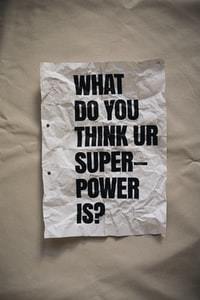The headline is the most important part of any blog. It’s what will make your blog post stand out from the rest. Headlines are the first thing your readers will see, and it will make them click on it or not. A great headline can mean the difference between a successful blog post and one that falls flat.

In a world where we are constantly inundated with content, it is more important than ever to have headlines that accurately reflect the article and pull readers in. Though crafting the perfect headline may seem daunting, there are some simple tips and tricks you can use to write catchy, clickable titles.

The importance of a headline
In today’s content-heavy climate, it’s more important than ever to have headlines that accurately reflect the content of your article. Not only do potential readers use headlines to determine whether or not an article is worth their time, but search engines also use them to help identify relevant content.
When crafting a headline for your next blog post, keep these tips in mind: be specific, focus on keywords, and make it attention-grabbing. By following these simple guidelines, you can ensure that your articles get the attention they deserve.

How to write a catchy headline
Your headline is your first, and maybe only, chance to make a good impression. So don’t write something that people will see, and just keep scrolling. You want them to stop, read more, and click through to your website or blog.

The headline is what your content is about.
The title should give readers a good idea of what the article is about. so they can decide if it’s something they’re interested in reading.
Use strong, active verbs.
Verbs are what make your writing come alive, so choose them carefully. Instead of “A Guide to Writing Engaging Article Titles,” try something like “How to Write Article Titles That Will Make People Click.”
Be specific.
General titles like “Tips for Writing” are less likely to grab attention than more specific ones like “How to Write a Blog Post That Gets Shared.”
Use numbers.
People are naturally drawn to numbers, so including them in your title can help make it more eye-catching. For example, try “7 Ways to Write Engaging Article Titles” or “The 10 Most Important Things to Keep in Mind When Writing Article Titles.”
Avoid clichés.
Clichés are overused phrases that can make your title sound boring and unoriginal. Instead, try to come up with something fresh and unique.
Keep it short.
People are busy, so they’re not likely to read a long, drawn-out title. Aim for something that’s ten words or less.
“Proofread carefully.”
Typos and grammatical errors can make your title look unprofessional and can turn people off from reading your article. So be sure to proofread carefully before you hit publish.

Develop engaging Headlines: how to
Start with a question.
Ask a thought-provoking question that will draw readers in and make them want to learn more. Use quotes. Quotes can add a lot of punch to a blog post. They can also be an effective way to add variety and express your own opinion.

Add graphics.
A picture is worth a thousand words, and adding graphics to your blog posts can give your readers more information in a more interesting and memorable way. Add links.
Make a statement.
Make a statement that will grab the reader’s attention and make them want to know more. List out your qualifications and experience. Provide details and quantify where possible. Provide details and quantify where possible.

Talk about your achievements. Discuss the key activities you have undertaken during your career to date. Discuss the key actions you have undertaken during your career to date. Include a paragraph about yourself.
Tell a story.
Give a brief anecdote that relates to the topic and will capture the reader’s interest.
Avoid the use of long words and complicated sentences. Examples: Don’t say: “I wish to discuss with you a matter of some importance to our company.” Do say: “I have an idea that might help us improve our productivity.” Don’t say: “I feel we would save considerable sums of money by updating our equipment.

Provide an overview.
a. Summarize the main points of the article in a few sentences.
b. Support these statements with specific examples (words, phrases, sentences).
c. Demonstrate that you understand what you read by demonstrating that you can summarize the main ideas. Summaries should NEVER quote the original text.
d. Summaries should be written in your own words (not in the author’s words).
e. Use complete sentences.
f. Use correct grammar and spelling.
g. Include a topic sentence that introduces the summary. h. Include transition words and phrases as needed to help the reader follow your train of thought.
i.Use a concluding sentence that restates the main ideas and leaves the reader with a sense of completeness.
Offer context.
Explain the context of the article and how it relates to the larger conversation. Explain the context of the article and how it relates to the larger conversation.
Explain what the article is about. Highlight the main points that the article makes. Highlight the main points that the article makes.
Provide an opinion. Explain what you think about the article and why. Use references from your academic knowledge to support your evaluation of the article.
Include a quote. Include a quote from a relevant expert or source to add credibility to the introduction. You’ll have to gather a lot of information to create this introduction, which is why it is the longest part of the paper. Include a quote from a relevant expert or source to add credibility to the introduction.

You’ll have to gather a lot of information to create this introduction, which is why it is the longest part of the paper. Name and define all concepts. Include every idea that you will use in your essay.
1. Start with a strong hook.
The first sentence of your introduction should be a strong hook that will grab the reader’s attention and make them want to read more. You can do this by using a surprising statistic, a personal anecdote, or a thought-provoking question.
2. Introduce your topic in a clear and concise way.
Once you have the reader’s attention, you need to introduce your topic in a clear and concise way. This means stating the main point of your article and giving the reader a brief overview of what they can expect to learn.
3. Show, don’t tell.
Instead of simply telling the reader what your article is about, show them. Use vivid language and imagery to paint a picture in the reader’s mind. This will make your introduction more engaging and memorable.
4. Make it personal.
The best introductions are the ones that connect with the reader on a personal level. You can do this by sharing a personal anecdote, using first-person pronouns, or writing in a conversational tone.
5. Keep it short.
Your introduction should be no more than one or two paragraphs long. If you ramble on for too long, you’ll lose the reader’s attention.
6. Proofread carefully.
Your introduction is the first thing the reader will see, so it’s important to make sure it’s error-free. Proofread carefully for any typos or grammatical errors before you hit publish.

Tips to help you write introductions
and how to come up with a conclusion:
1. Restate your thesis statement.
The conclusion should restate your thesis statement in a clear and concise way. This will help to reinforce the main point of your article. And leave the reader with a clear understanding of what you’ve been trying to say.
2. Summarize your main points.
The conclusion should also summarize your main points. This will help to remind the reader of the key points you’ve made in your article and help them to see how all of the pieces fit together.
3. Leave the reader with something to think about.
The conclusion should end with a thought-provoking statement or question that will leave the reader thinking about your article long after they’ve finished reading it. This could be a call to action, a challenge to the reader’s beliefs, or simply a thought-provoking quote.
4. Keep it short and sweet.
The conclusion should be no more than one or two paragraphs long. If you ramble on for too long, you’ll lose the reader’s attention.
5. Proofread carefully.
Your conclusion is the last thing the reader will see, so it’s essential to make sure it’s error-free. Proofread carefully for any typos or grammatical errors before you hit publish.
Thanks,
Kevin
Dear Reader,
Welcome to Can I Be A Writer! We’re so glad you’ve decided to join us on this journey to becoming a better writer.
At Can, I Be A Writer, we provide helpful tips and advice to help you become a better writer. Whether you’re a beginner or an experienced writer, we have something for everyone.
We invite you to stay and learn more about how to write better. We have a wide range of topics to explore, from grammar and punctuation to writing techniques and more. We also have a community of writers who are here to offer support and feedback.
We hope that you’ll stay and learn more about how to write better. Thank you for being part of the Can I Be A Writer community!
Can I be a Writer am passionate about helping beginning bloggers gain the skills and knowledge to succeed. In fact, you could say that the Can I be a Writer online is a one-stop shop for writing and marketing with everything you will need, videos of training and support available on the web, but you will get support as an internet entrepreneur, whether you are a beginner or a pro.
Click Here!
Sincerely,
The Can I Be A Writer Team

